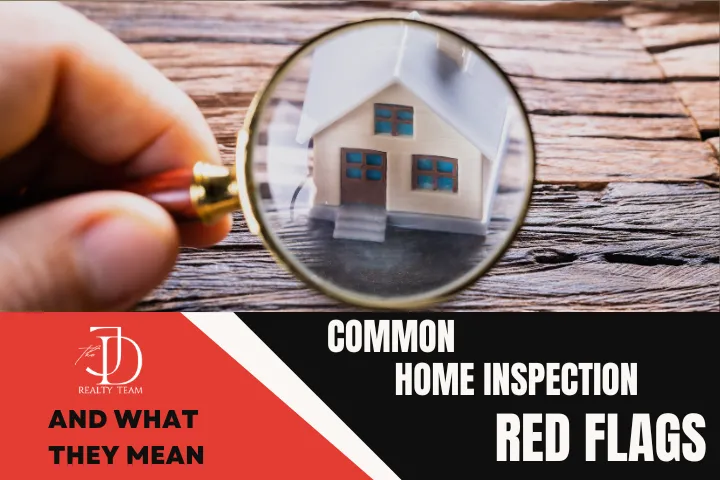
Common Home Inspection Red Flags and What They Mean
Buying a home is an exciting journey, but it’s important to be prepared for every step—especially the home inspection. A home inspection helps you understand the condition of the property and can save you from unexpected surprises down the road. While most homes will have a few minor issues, some problems are bigger red flags that might need immediate attention or even cause you to reconsider the purchase. In this article, we'll walk you through the most common home inspection red flags and what they really mean for you as a buyer.
Why Home Inspections Matter
A home inspection is your chance to take a closer look at what you’re buying. It’s more than just checking if the lights turn on—it’s about finding hidden problems that could affect your safety or your wallet. A licensed inspector will review the home's major systems like plumbing, electrical, roofing, and structure, and will point out anything that needs to be fixed or replaced.
If you're new to the whole buying process, check out our Step-by-Step Guide to Buying Your First Home in Roanoke: From Dream to Doorstep to get a clear picture of what to expect.
1. Foundation Cracks and Structural Issues

What to Look For:
Large cracks in walls or ceilings
Uneven floors
Doors or windows that stick
What It Means:
Small hairline cracks can be normal as houses settle, but big cracks could be a sign of serious structural problems. These issues can cost thousands of dollars to repair and might even affect the safety of the home. If your inspector finds structural damage, it’s important to get a specialist to evaluate the repairs needed.
2. Roof Damage

What to Look For:
Missing or curling shingles
Signs of water leaks or stains on ceilings
Moss or mold on the roof
What It Means:
Roofs protect everything underneath them. A damaged roof can lead to leaks, mold, and further structural problems. Roof replacements are costly, so knowing the roof’s condition helps you budget properly or negotiate repairs with the seller.
3. Electrical Problems

What to Look For:
Outdated wiring (like knob-and-tube or aluminum)
Flickering lights or dead outlets
Electrical panels not up to code
What It Means:
Old or faulty wiring isn’t just inconvenient—it can be dangerous. Electrical problems are a fire hazard and should be fixed right away. If an inspection reveals these issues, you'll need a licensed electrician to make things safe.
4. Plumbing Issues

What to Look For:
Low water pressure
Leaky pipes or water stains
Outdated piping (like polybutylene)
What It Means:
Plumbing problems can lead to water damage and mold. Older pipes might need to be replaced, which can be a major job. Even small leaks should be addressed quickly to avoid bigger expenses.
5. HVAC System Problems

What to Look For:
Heating or cooling not working properly
Strange noises or smells from vents
Old HVAC systems (more than 15 years old)
What It Means:
Your comfort depends on a good heating and cooling system. If the system is old or broken, it could mean high repair costs or the need for a new unit soon.
6. Mold and Water Damage

What to Look For:
Musty smells
Visible mold or mildew
Water stains on walls, ceilings, or floors
What It Means:
Mold is more than just unsightly—it can affect your health. Water damage is often a sign of leaks or poor ventilation. These issues need to be fixed right away to prevent bigger problems.
7. Pest Infestations

What to Look For:
Signs of termites, ants, or rodents
Wood that sounds hollow
Droppings or chewed wires
What It Means:
Pests can cause serious damage to your home’s structure. A pest inspection can confirm the extent of the problem. Treatment is usually possible, but it’s something to factor into your decision.
Touring Homes? Know What Questions to Ask
Home inspections are key, but touring a home the right way helps you spot potential red flags early. For more guidance on what to watch for when visiting homes, check out our How to Tour a Home: Questions You Should Be Asking article for a handy list of what to look for.
How The J&D Realty Team Helps You Handle Inspection Red Flags
When you work with The J&D Realty Team, you’re not alone in figuring out what inspection results mean. We help you:
Schedule inspections with trusted professionals
Understand the results and what they mean
Negotiate repairs or price adjustments with the seller
Connect you with contractors for further evaluation
What To Do If You Spot a Red Flag
Don’t panic – Not all issues are deal-breakers.
Get more information – Ask for specialist opinions.
Negotiate – You can ask the seller to fix the issue or lower the price.
Walk away if needed – Sometimes, it’s best to move on.
Your dream home should also be a safe and sound investment. By knowing what to look out for and how to respond, you’ll be in a better position to make the right choice.
Frequently Asked Questions
1. Should I attend the home inspection?
Yes! It’s a great opportunity to learn about your future home and ask the inspector questions directly.
2. Can I ask the seller to fix issues found in the inspection?
Absolutely. You can request repairs or ask for a credit at closing. Your Realtor will help with this.
3. How long does a home inspection take?
Usually 2-4 hours, depending on the size and condition of the home.
4. What happens if the home doesn’t pass inspection?
Homes don’t "pass" or "fail." The inspection shows what needs attention. It’s up to you to decide what’s acceptable.
5. What if I still want the home but can’t afford the repairs?
You might negotiate with the seller or look into renovation loans that cover repair costs.
